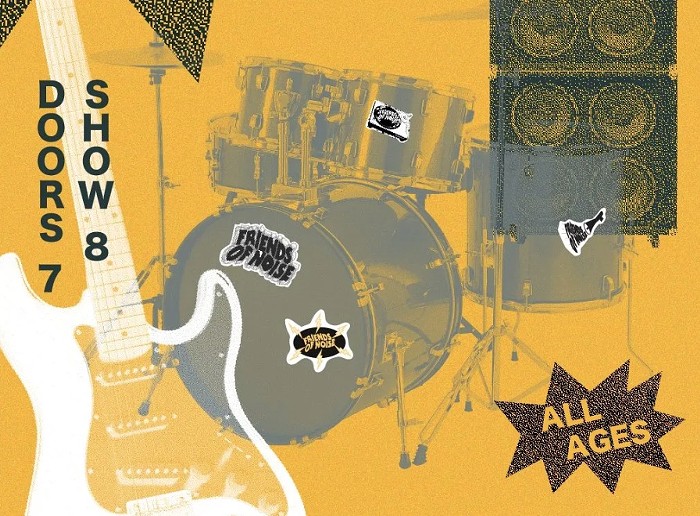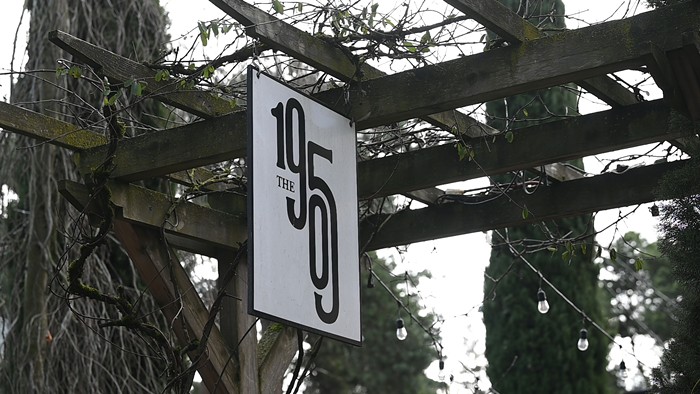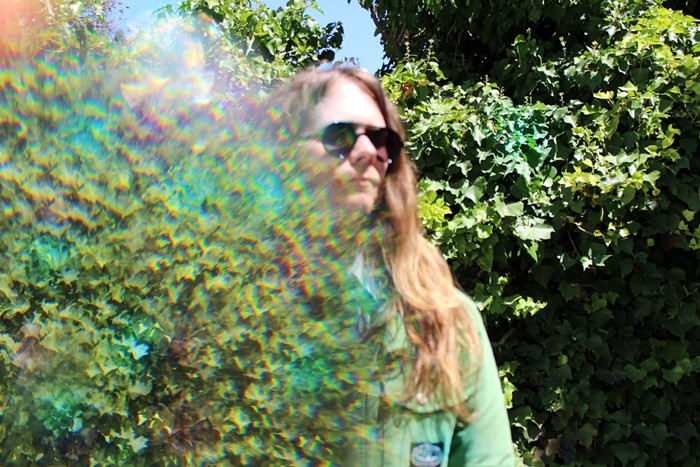
As with the first batch, these four albums are now available on ordinary 33 RPM single discs, and on special two-disc 45 RPM versions, mastered with greater fidelity using the half-speed process. The 45 RPM versions also split each album across four sides instead of two, meaning you’ll have to get up twice as often to flip the disc, and, in one case, a side-long track being split in two. All four of these albums are important recordings, and are certainly worth hearing, but which versions should you get, the 33 RPMs or the 45s? It’s tough to say.
Few musical forms arrive fully-fledged and defined, but when Eno—a keyboardist formerly in the glam-art-rock band Roxy Music—began to release experimental sounds in the 1970s that were defined by minimalism and electronic textures, he called it “ambient music,” instantly coining the term that would go on to demarcate a genre of its own. Although ambient music had precursors in the repetitive and droning work of avant-garde composers of the 20th century and, more specifically, German electronic bands in the ’70s, Eno—whose immense talent has always been as much conceptual as it is musical—inked its parameters.
For example, Discreet Music’s 30-minute title track is a series of repetitive loops that never line up in exactly the same way, creating an evolving musical piece that’s like the surface of a moving stream. It was inspired by some baroque harp music Eno heard while injured in bed. He was unable to get up to turn up the volume when it started to rain, so the music shifted in and out of audibility, and became inextricable with the noise outside. On Music for Airport’s liner notes, Eno wrote, “Ambient Music must be able to accommodate many levels of listening attention without enforcing one in particular; it must be as ignorable as it is interesting.”
For my tastes, Discreet Music and Music for Airports are the standouts in this four-album “series.” They use more organic textures, including piano, strings, rounded analog synths, and vocal clusters that suggest Eno’d been listening to 10cc. The later two albums, Music for Films and On Land, are darker and more digital, with gurgling, gravelly tones instead of gliding ones; the landscapes they draw are more defined and leave less to your own imagination.
The best track is the stunning “Discreet Music,” which casts a series of spells over its distended 30-minute duration. Its presence on the 45 RPM disc will be, for some, a problem, as the piece is chopped in half and spread across two sides. This was less of an issue for me than I expected, as the two halves work very well independently; you could listen to only 15 minutes of it without losing too much of the experience. The fidelity is also significant; 30 minutes a side is pushing the vinyl medium to its limits, although the piece does not have a huge dynamic range.
The remaining pieces on Discreet Music are gorgeous, if not quite as earth-shattering; in all three, a string ensemble reinterprets Pachelbel’s “Canon” into chopped-and-diced sound smears, throwing tempo and concert out the window, instead letting each instrumental part move at its own individual pace.
Music for Airports is also extraordinary, with very simple instrumentation—piano, synth, voices—creating dreamlike auras. The opening track, “1/1” is both comforting and mournful, like a warm sun rising over desolate ruins. And the closer, “2/2,” is an exploration for a chubby-sounding synthesizer voice, singing to you like a dream escaping into wakefulness.
This ability for the listener to juxtapose ideas and narratives on top of the music he was making led Eno to take that idea to its natural next stage, by collecting a series of smaller pieces and calling it Music for Films. The sketchbook nature of this album means none of the tracks are as monumental or moving as what came before, and their shorter duration means ideas are pronounced, then abandoned almost immediately. It’s a diverting listen but not a particularly focused one.
On Land is perhaps the most challenging—and dated—of the four. Gone are the clear melodic refrains of Discreet Music and Airports, in favor of pulsing, sustained tones underpinned by what were meant to be “natural” sounds like insects and sticks and water, but they’ve been processed and filtered, an instead come across as evil-sounding groans and ominous drones. Perhaps overfamiliarity has made this often-imitated work sound to today's ears like a cliché of suspenseful soundtrack music, but when the occasional fanfare seeps out, as with an emergent piano on “Tal Coat,” the album is at its best.
The real question is which version to get: The regular 33 RPM versions, or the fancy 45 RPM ones? I’ve sampled both, and gone back and forth. To be sure, the 45s have better sound, but significantly so? I wouldn’t quite say that. The static, non-dynamic nature of the music makes it particularly hard to evaluate, so a careful listen didn’t reveal much more sonic information on the 45s. When I stopped paying close attention, however, the 45s may have held more subliminal information, with thicker resonance, more enveloping sound, and a more holographic presence. The music felt closer, in unquantifiable ways.
I can’t say, however, that that’s enough to justify the expense of the double discs, or the annoyance of getting up to flip the record twice as often. (And as mentioned previously, “Discreet Music” is chopped clean in half.) These are albums meant for sinking into without interruption, and the shorter sides notably disrupt the flowing sensation they’re intended to conjure. This is not a helpful thing for a critic or a consumer advisor to say, but it really comes down to the individual listener as to whether they’ll want to go for the fancy expensive versions.
In all cases, 33 and 45, the pressings are not perfect. Some of the vinyl is noisy, with intermittent tics and pops that ideally shouldn’t be present on new vinyl. It’s nothing out of the ordinary, perhaps, but the quiet nature of these albums makes those flaws stand out noticeably. Two of the 33 discs I received were slightly dished, as well. But considering that the original pressings were made during a period where the vinyl quality was often substandard (oil shortage, etc.) and that those copies may not be in mint shape today, these new reissues may well be the best chance for newcomers to get their hands on this music in as clean a vinyl presentation as possible.


















